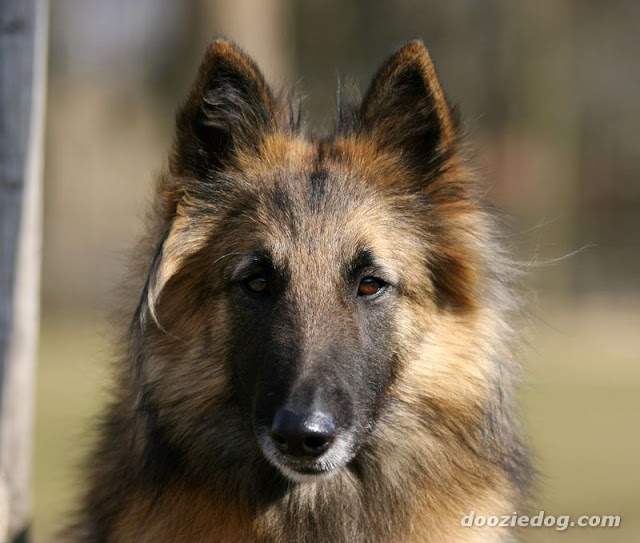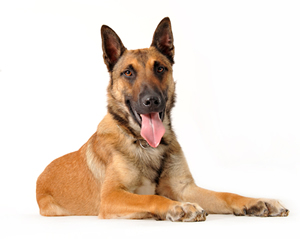Fast Facts
| Group classification: Working | Country of origin: Switzerland | Date of origin: Antiquity |
| Weight (M): 90 - 120 lb | Height (M): 25 - 28" | Life expectancy: 7 - 9 years |
| Weight (F): 70 - 100 lb | Height (F): 23 - 26" |
General Description of the Bernese Mountain Dog
The Bernese Mountain Dog is a large, beautifully colored working dog. Its head is broad and flat, with a gentle furrow and distinct stop, and a muzzle that is straight and long. Gently oval shaped eyes are brown in color. The ears are triangular, medium in size, set close to the head with softly rounded ends. A long, muscular neck leads to a topline that is even from withers to croup. The chest is deep and well-muscled, and the back firm and wide. The tail is long, bushy and carried low unless the dog is alert, in which case it is lifted slightly. The coat is dense, thick and long, and can be either straight or gently waved. Coloring is always tri-colored, with jet black ground, and symmetrical markings of rust and white.
Bernese Mountain Dog Temperament
The Bernese Mountain Dog is a fantastic pet for families with children. These gentle giants adore children and are protective, loving and gentle. They are loyal and tend to stay that way for life, which is why they should be brought into a home as puppies and ownership should not be changed after the age of 18 months if at all possible. This breed is sociable with other animals and accepting, though a tad reserved, around strangers. They are intelligent and hardworking, but also boisterous and energetic. They enjoy being around people and cannot be left alone for long periods. These dogs are sensitive in nature and need gentle guidance rather than sharp or harsh correction. All in all, the Bernese Mountain Dog makes a great family pet if socialized and trained correctly.
Caring for a Bernese Mountain Dog
The Bernese Mountain Dog is a working breed, and as such requires a good deal of exercise. The dog enjoys long walks and pulling; tying your dog’s harness to a wagon and having him pull the kids around the driveway is excellent exercise and something the whole family can enjoy. Because the Bernese Mountain Dog has a thick, dense coat, regular brushing is a must. During shedding season, brushing and combing will need to be performed more frequently. Keep the ears clean and the nails clipped. Make sure your dog gets plenty of exercise and opportunities to socialize to keep it healthy and happy. This dog should not be made to live outside, since closeness to its family is so important to its mental development; ideally, the dog should sleep indoors and have easy access to a backyard. Take care that your dog does not get overheated on hot days. The Bernese Mountain Dog is susceptible to canine hip and elbow dysplasia, gastric torsion, mast cell tumor, entropion, ectropion, cataracts and subvalvular aortic stenosis.
Don’t let the name fool you. The Bernese Mountain Dog, although suitable for living outdoors, can also be a great apartment dog. I went to the dog park last Saturday and met a gorgeous 2-year old female Bernese named Riley. She was as sweet as can be…she literally followed me the entire time I was there. The squeaky KONG tennis ball that I brought with me was an instant hit with many of the dogs at the park, including Riley. Unfortunately she wasn’t as fast as a feisty Jack Russell I met or even Ollie but she still chased it nonetheless.
Bernese Mountain Dogs sort of look like bigger versions of Black Tricolor Australian Shepherds. You might have seen these dogs on television; they’re the ones who pull the carts and wagons. Despite all the hard work they put in, these dogs have some of the best temperaments around. They are affectionate, intelligent, loyal, eager to please and are mostly friendly to people, dogs and other animals. They can be shy and need time to think things through so it is important to be gentle with them. They love encouragement and treats though! They are also great with children. Sounds like the best dog ever huh?
Unfortunately there is one downside to these beautiful dogs, and that’s their short lifespan which is only 7 years on average

















































